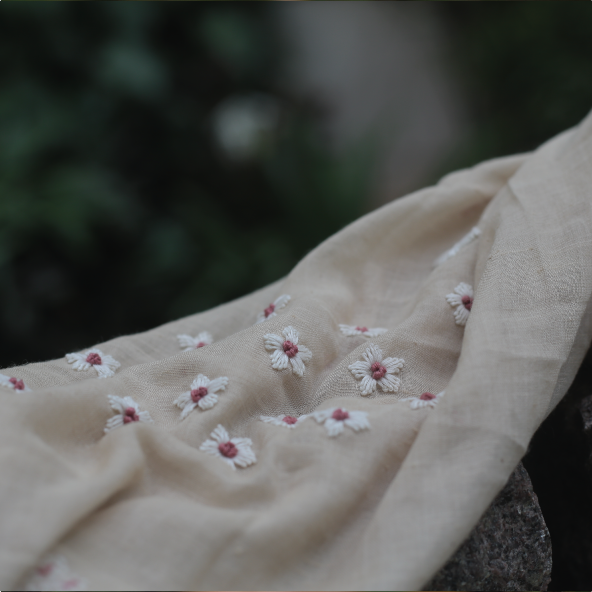Natural, versatile, ethical & sustainable
Scroll down to know more...
A Peaceful Process:
Eri silk comes from open ended cocoons, made by the unique semi domesticated silk worm Samia Cynthia Ricini, that allows the moth to escape. Hence, eri silk is often referred to as ‘peace silk’. The harvested fibres are not continuous like in mulberry and other natural silks. Hence, eri silk is spun and not reeled.
Uniquely Versatile:
Eri silk is an all-weather fabric with the cool comfort of cotton, the warmth of wool &the subtle elegant lustre of silk.
Eri silk yarn combines well with other yarns; enhancing the quality of blended fabrics with its unique drapability and feel.
Coarser counts give a wooly texture; finer counts give a linen, cotton or silky texture depending on the weaving technique selected.
Breathable & Comfortable:
Eri silk's quality of good moisture absorption of 13% and high porosity makes it soft, durable, and extremely comfortable next to the skin.
- Highly breathability
- High moisture transport efficiency (sweat proof)
- Low friction co-efficient
- Low flame spread - stable at higher temperature upto 1400 C
- Good UV protection factor - 15.99
- Anti-fungal / bacterial
- Hypoallergenic
- Odourless
- Easy care & quick dry (cold wash with soft soap)
- Good crease recovery - 940 in warp & 960 in weft direction
Isothermal:
Eri silk keeps you cool in summer and warm in winter.
Eri silk keeps you cool in summer and warm in winter.
"This silk consists of a bio polymer with excellent thermal properties due to the high crystallinity of the fibroid. The level of crystalline conformation of the protein is directly correlated with the thermal conductivity. This kind of material is a result of a long biological evolution showing incomparable properties"
- abstract from a test report of our eri yarn from INNOVHUB Milano, Italy.
Collaborated internal reference study by Trudel AG, Kussnacht, Switzerland
Earth Friendly:
The name eri is derived from the Assamese word 'Era' which Is the local name of the castor oil plant. Eri worms feed on the leaves of the drought resistant castor plant which requires very little water for its sustenance, thus leaving a low carbon foot print.
Eri silk is often referred to as the world’s most sustainable silk as it consumes a meagre 0.001% of water.









